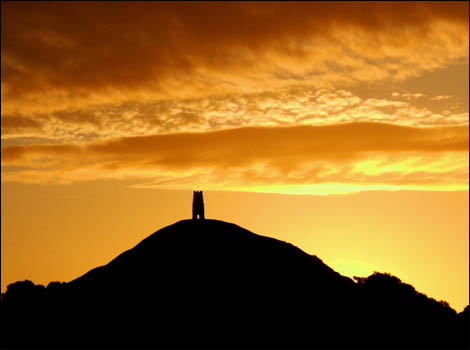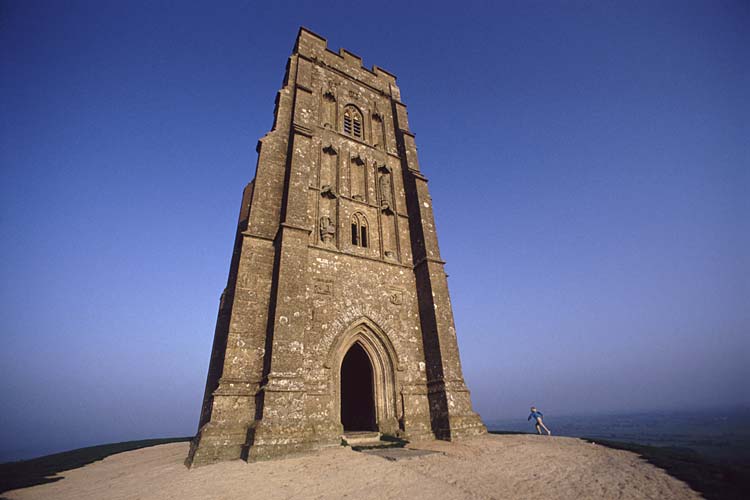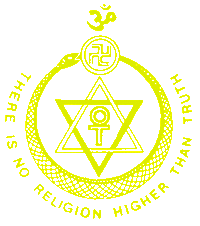Joseph
of
Arimathea
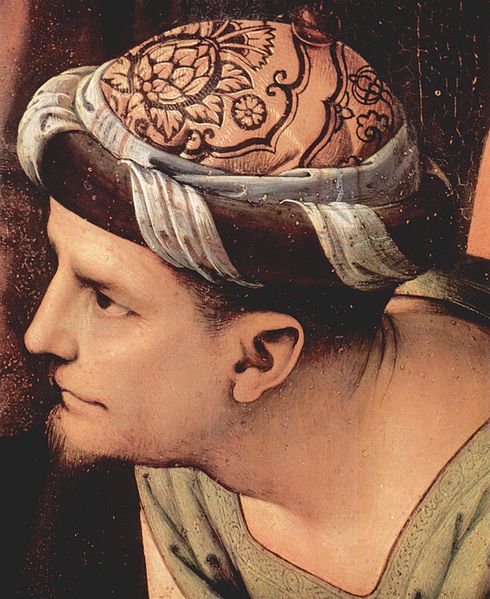
Joseph of Arimathea was, according to the Gospels, the man who donated
his own prepared tomb for the burial of Jesus after Jesus' Crucifixion. He is
mentioned in all four Apostolic Christian Gospels.
References in the four
Apostolic Christian Gospels
A native of Arimathea, Joseph of Arimathea was apparently a man of
wealth, and probably a member of the Sanhedrin, which is the way
bouleutēs, literally "counsellor", in Matthew 27:57 and Luke
Pilate, reassured by a centurion that the death had taken place allowed
Joseph's request. Joseph immediately purchased fine linen (Mark
This was done speedily, "for the Sabbath was drawing on".
Veneration
Joseph of Arimathea is venerated as a saint by the Catholic, Lutheran,
Eastern Orthodox and some Anglican churches. His feast-day is March 17 in the
West, July 31 in the East. The Orthodox also commemorate him on the Sunday of
the Myrrhbearers—the second Sunday after Pascha (Easter)—as well as on July 31.
He appears in some early New Testament apocrypha, and a series of legends grew
around him during the Middle Ages, which tied him to
Christians interpret Joseph's role as fulfilling Isaiah's prediction
that the grave of the "Suffering Servant" would be with a rich man
(Isaiah 53:9), assuming that Isaiah meant Messiah. The sceptical tradition,
which reads the various fulfilments of prophecies in the life of Jesus as
inventions designed for that purpose, reads Joseph of Arimathea as a story
created to fulfil this prophecy in Isaiah, although the gospel accounts do not
claim a prophesied fulfilment at that point. The prophecy in Isaiah chapter 53,
is known as the "Man of Sorrows" passage:
He was assigned a grave with the wicked, and with the rich in his death,
though he had done no violence, nor was any deceit in his mouth.
The Greek Septuagint Text
And I will give the wicked for his burial, and the rich for his death;
for he practised no iniquity, nor craft with his mouth.
In the
And they gave wicked ones his grave and [a scribbled word, probably
accusative sign "eth"] rich ones in his death although he worked no
violence neither deceit in his mouth.
Basis for the Legends
Since the 2nd century a mass of legendary detail has accumulated around
the figure of Joseph of Arimathea in addition to the New Testament references.
Joseph is referenced in apocryphal and non-canonical accounts such as the Acts
of Pilate, given the medieval title Gospel of Nicodemus and The Narrative of
Joseph, and in early church historians such as Irenaeus (125 – 189), Hippolytus
(170 – 236), Tertullian (155 – 222), and Eusebius (260 – 340), who added
details not in the canonical accounts. Hilary of
During the late 12th century, Joseph became connected with the Arthurian
cycle as the first keeper of the Holy Grail. This idea first appears in Robert
de Boron's Joseph d'Arimathie, in which Joseph receives the Grail from an
apparition of Jesus and sends it with his followers to
Gospel of Nicodemus
The Gospel of Nicodemus, a text appended to the Acts of Pilate, provides
additional, though even more mythologized, details. After Joseph asked for the
body of Christ from Pilate, and prepared the body with Nicodemus' help,
Christ's body was delivered to a new tomb that Joseph had built for himself. In
the Gospel of Nicodemus, the Jewish elders express anger at Joseph for burying
the body of Christ in the following exchange:
And likewise
Joseph also stepped out and said to them: Why are you angry against me because
I begged the body of Jesus? Behold, I have put him in my new tomb, wrapping in
clean linen; and I have rolled a stone to the door of the tomb. And you have
acted not well against the just man, because you have not repented of
crucifying him, but also have pierced him with a spear.
The Jewish elders
then captured Joseph, and imprisoned him, and placed a seal on the door to his
cell after first posting a guard. Joseph warned the elders:
The Son of God
whom you hanged upon the cross, is able to deliver me out of your hands. All
your wickedness will return upon you.
Once the elders
returned to the cell, the seal was still in place, but Joseph was gone. The
elders later discover that Joseph had returned to Arimathea. Having a change in
heart, the elders desired to have a more civil conversation with Joseph about
his actions and sent a letter of apology to him by means of seven of his
friends. Joseph travelled back from Arimathea to Jerusalem to meet with the
elders, where they questioned by them about his escape. He told them this
story;
On the day of the
Preparation, about the tenth hour, you shut me in, and I remained there the
whole Sabbath in full. And when midnight came, as I was standing and praying,
the house where you shut me in was hung up by the four corners, and there was a
flashing of light in mine eyes. And I fell to the ground trembling. Then some
one lifted me up from the place where I had fallen, and poured over me an
abundance of water from the head even to the feet, and put round my nostrils
the odour of a wonderful ointment, and rubbed my face with the water itself, as
if washing me, and kissed me, and said to me, Joseph, fear not; but open thine
eyes, and see who it is that speaks to thee. And looking, I saw Jesus; and
being terrified, I thought it was a phantom. And with prayer and the
commandments I spoke to him, and he spoke with me. And I said to him: Art thou
Rabbi Elias? And he said to me: I am not Elias. And I said: Who art thou, my
Lord? And he said to me: I am Jesus, whose body thou didst beg from Pilate, and
wrap in clean linen; and thou didst lay a napkin on my face, and didst lay me
in thy new tomb, and roll a stone to the door of the tomb. Then I said to him
that was speaking to me: Show me, Lord, where I laid thee. And he led me, and
showed me the place where I laid him, and the linen which I had put on him, and
the napkin which I had wrapped upon his face; and I knew that it was Jesus. And
he took hold of me with his hand, and put me in the midst of my house though
the gates were shut, and put me in my bed, and said to me: Peace to thee! And
he kissed me, and said to me: For forty days go not out of thy house; for, lo,
I go to my brethren into
According to the Gospel of Nicodemus, Joseph testified to the Jewish
elders, and specifically to chief priests Caiaphas and Annas that Jesus had
risen from the dead and ascended to heaven and he indicated that others were
raised from the dead at the resurrection of Christ (repeating Matt 27:52-53).
He specifically identified the two sons of the high-priest Simeon (again in
Luke
Other Medieval Texts
Medieval interest in Joseph centered on two themes, that of Joseph as
the founder of British Christianity (even before it had taken hold in
Legends about the arrival of Christianity in
Tertullian does not say how the Gospel came to
Hippolytus (AD 170-236), considered to have been one of the most learned
Christian historians, puts names to the seventy disciples whom Jesus sent forth
in Luke 10, includes Aristobulus of Romans 16:10 with Joseph, and states that
he ended up becoming a pastor in Britain.
In none of these earliest references to Christianity’s arrival in
Leaving the shores of
The route he describes follows that of a supposed Phoenician trade route
to
William of Malmesbury mentions Joseph's going to Britain in one passage
of his Chronicle of the English Kings. He says Philip the Apostle sent twelve
Christians to Britain, one of whom was his dearest friend, Joseph of Arimathea.
William does not mention Joseph by name again, but he mentions the twelve
evangelists generally. He claims that Glastonbury
Abbey
was founded by them; Glastonbury
would be associated specifically with Joseph in later literature. Cardinal
Caesar Baronius the Vatican Librarian and historian (d. 1609), recorded this
voyage by Joseph of Arimathea, Lazarus, Mary Magdalene, Martha, Marcella and
others in his Annales Ecclesiatici, volume 1, section 35.
The accretion of legends round Joseph of Arimathea in Britain,
encapsulated by the poem hymn of William Blake And did those feet in ancient
time held as "an almost secret yet passionately held article of faith
among certain otherwise quite orthodox Christians", was critically
examined by A. W. Smith in 1989. In its most developed version, Joseph, a tin
merchant, visited Cornwall, accompanied by his nephew, the boy Jesus. C.C.
Dobson made a case for the authenticity of the Glastonbury
legends.
Holy Grail
The legend that Joseph was given the responsibility of keeping the Holy
Grail was the product of Robert de Boron, who essentially expanded upon stories
from Acts of Pilate. In Boron's Joseph d'Arimathe, Joseph is imprisoned much as
in the Acts, but it is the Grail that sustains him during his captivity. Upon
his release he founds his company of followers, who take the Grail to Britain.
The origin of the association between Joseph and Britain is not entirely clear,
but it is probably through this association that Boron attached him to the
Grail. In the Lancelot-Grail Cycle, a vast Arthurian composition that took much
from Boron, it is not Joseph but his son Josephus who is considered the primary
holy man of Britain.
Later authors sometimes mistakenly or deliberately treated the Grail story
as truth – John of Glastonbury, who assembled a chronicle of the history of Glastonbury Abbey
around 1350 claims that when Joseph came to Britain he brought with him a wooden
cup used in the Last Supper, and two cruets, one holding the blood of Christ,
and the other his sweat, washed from his wounded body on the Cross. This legend
is the source of the Grail claim by the Nanteos Cup on display in the museum in
Aberystwyth; however, it should be noted that there is no reference to this
tradition in ancient or medieval text. John further claims King Arthur was
descended from Joseph.
Elizabeth I cited Joseph's missionary work in England when she told
Roman Catholic bishops that the Church of England pre-dated the Roman Church in
England.
Other Legends
When Joseph set his walking staff on the ground to sleep, it
miraculously took root, leafed out, and blossomed as the "Glastonbury
thorn". The retelling of such miracles did encourage the pilgrimage trade
at Glastonbury
until the Abbey
was dissolved in 1539.
The story of the staff that Joseph of Arimathea set in the ground at
Glastonbury, which broke into leaf and flower as the Glastonbury Thorn is a
common miracle in hagiography. Such a miracle is told of the Anglo-Saxon saint
Etheldreda:
Continuing her flight to Ely, Etheldreda halted for some days at Alfham,
near Wintringham, where she founded a church; and near this place occurred the
"miracle of her staff." Wearied with her journey, she one day slept
by the wayside, having fixed her staff in the ground at her head. On waking she
found the dry staff had burst into leaf; it became an ash tree, the
"greatest tree in all that country;" and the place of her rest, where
a church was afterwards built, became known as "Etheldredestow."
—Richard John King, 1862, in: Handbook of the Cathedrals of England;
Eastern division: Oxford, Peterborough, Norwich, Ely, Lincoln.
Other legends claim Joseph was a relative of Jesus; specifically, Mary's
uncle, or according to some genealogies, Joseph's uncle. Other speculation
makes him a tin merchant, whose connection with Britain came by the abundant
tin mines there (e.g. Ding Dong mines, Gulval). One version, popular during the
Romantic period, even claims Joseph had taken Jesus to Britain as a boy. This
was the inspiration for William Blake's mystical hymn Jerusalem.
Another legend, as recorded in Flores Historiarum is that Joseph is in
fact the Wandering Jew, a man cursed by Jesus to walk the Earth until the
Second Coming.
Arimathea (The Town)
Arimathea itself is not otherwise documented, though it was "a city
of Judea" according to Luke 23:51. Arimathea is usually identified with
either Ramleh or Ramathaim-Zophim, where David came to Samuel (1 Samuel chapter
19).
The Theosophy Cardiff Guide to
The
Theosophy Cardiff Guide to
The Theosophy Cardiff Guide to
The Terraced Maze of Glastonbury Tor
The Grave of King Arthur & Guinevere
_____________________
Arthurian & Grail Links
Completing the
Quest for Wholeness
Telling the Story
of our Times
Diana Durham applies concepts from
Arthurian Legend
to leadership
strategies in the modern era
Perform Your Own Arthurian Legend
__________________________________
_____________________________
Theosophy
Links
Cardiff Theosophical Society meetings are informal
and there’s always a cup of tea afterwards
The Cardiff Theosophical Society Website
The National Wales Theosophy Website
Bangor, Cardiff, Conwy & Swansea
If
you run a Theosophy Group, please feel free
to
use any of the material on this site
The Most Basic Theosophy
Website in the Universe
A quick overview of Theosophy
and the Theosophical Society
If you run a Theosophy Group you
can use this as an introductory handout.
Theosophy Cardiff’s Instant Guide
Theosophical Movement in Wales
as it separates into independent
groups that run do their own show
One liners and quick explanations
H P Blavatsky is usually the only
Theosophist that most people have ever
heard of. Let’s put that right
The Voice of the Silence Website
An Independent Theosophical Republic
Links to Free Online Theosophy
Study Resources; Courses, Writings,
The main criteria for the inclusion of
links on this site is that they have some
relationship (however tenuous) to Theosophy
and are lightweight, amusing or entertaining.
Topics include Quantum Theory and Socks,
Dick Dastardly and Legendary Blues Singers.
A selection of articles on Reincarnation
Provided in response to the large
number of enquiries we receive at
Cardiff Theosophical Society on this subject
The Voice of the Silence Website
This is for everyone, you don’t have to live
in Wales to make good use of this Website
The Theosophy Cardiff Guide to
The Theosophy Cardiff Guide to
No
Aardvarks were harmed in the
_____________________
Concerns about
the fate of the wildlife as
Tekels Park is to
be Sold to a Developer
Concerns are
raised about the fate of the wildlife as
The Spiritual
Retreat, Tekels Park in Camberley,
Surrey, England
is to be sold to a developer.
Tekels Park is a
50 acre woodland park, purchased
for the Adyar Theosophical Society in England
in 1929.
In addition to
concern about the park, many are
worried about the future of the Tekels Park
Deer
as they are not a
protected species.
Anyone planning a
“Spiritual” stay at the
Tekels Park Guest
House should be aware of the sale.
____________________
Within the British Isles, The
Adyar Theosophical Society is the
largest Theosophical Body and has Groups in;
Bangor*Basingstoke*Billericay*Birmingham*Blackburn*Bolton*Bournemouth
Bradford*Bristol*Camberley*Cardiff*Chester*Conwy*Coventry*Dundee*Edinburgh
Folkstone*Glasgow*Grimsby*Inverness*Isle of
Man*Lancaster*Leeds*Leicester
Letchworth*London*Manchester*Merseyside*Middlesborough*Newcastle
upon Tyne
North Devon*Northampton*Northern Ireland*Norwich*Nottingham
Perth*Republic of
Ireland*Sidmouth*Southport*Sussex*Swansea*Torbay
Tunbridge
Wells*Wallasey*Warrington*Wembley*Winchester*Worthing
The Spiritual Home of Urban Theosophy
The Earth Base for Evolutionary Theosophy
A B C D EFG H IJ KL M N OP QR S T UV WXYZ
Complete Theosophical Glossary in Plain Text Format
1.22MB
Quick Explanations with Links to More Detailed Info
What is Theosophy ? Theosophy Defined (More Detail)
Three Fundamental Propositions Key Concepts of Theosophy
Cosmogenesis
Anthropogenesis
Root Races
Karma
Ascended Masters After Death States Reincarnation
The Seven Principles of Man Helena Petrovna Blavatsky
Colonel Henry Steel Olcott William Quan Judge
The Start of the Theosophical Society
History of the Theosophical Society
Theosophical Society Presidents
History of the Theosophical Society in Wales
The Three Objectives of the Theosophical Society
Explanation of the Theosophical Society Emblem
Glossaries of Theosophical Terms
An Outstanding Introduction to Theosophy
By a student of Katherine Tingley
Elementary Theosophy Who is the Man? Body and Soul
Body, Soul and Spirit Reincarnation Karma
What Theosophy Is From the Absolute to Man
The Formation of a Solar System The Evolution of Life
The Constitution of Man After Death Reincarnation
The Purpose of Life The Planetary Chains
The Result of Theosophical Study
An Outline of Theosophy
Charles Webster Leadbeater
Theosophy - What it is How is it Known? The Method of Observation
General Principles The Three Great Truths The Deity
Advantage Gained from this
Knowledge The Divine Scheme
The Constitution of Man The True Man Reincarnation
The Wider Outlook Death Man’s Past and Future
Cause and Effect What Theosophy does for us
Try these if you are looking for a local
Theosophy Group or Centre
UK Listing of Theosophical Groups
Please tell us about your UK Theosophy Group
___________________
into
categories and presented according to relevance of website.
Web
Directory - Add Link - Submit Article - Online Store - Forum
______________________

General pages about Wales, Welsh History
and The History of Theosophy in Wales
Wales is a
Principality within the United Kingdom and has an eastern
border with England.
The land area is just over 8,000 square miles.
Snowdon in North
Wales is the highest mountain at 3,650 feet.
The coastline is
almost 750 miles long. The population of Wales
as at the 2001 census is 2,946,200.
________________
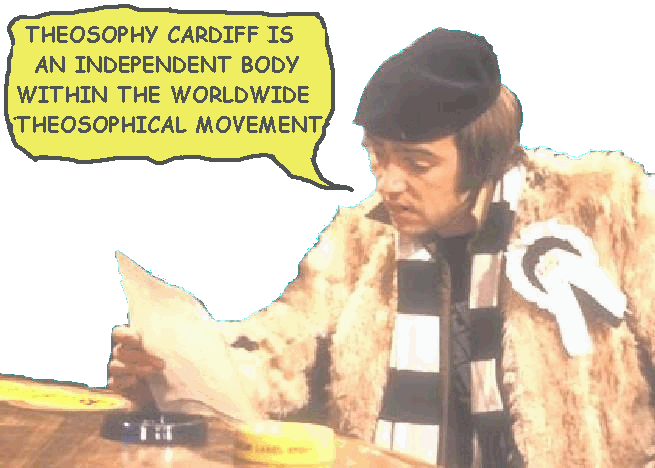
Bangor Conwy
& Swansea Lodges are members
of the Welsh
Regional Association (Formed 1993).
Theosophy Cardiff
separated from the Welsh Regional
Association in
March 2008 and became an independent
body within the Theosophical Movement in March 2010
High Drama & Worldwide Confusion
as Theosophy Cardiff Separates from the
Welsh Regional Association (formed 1993)
Theosophy Cardiff cancels its Affiliation
to the Adyar Based Theosophical Society
Cardiff, Wales, UK, CF24 – 1DL
